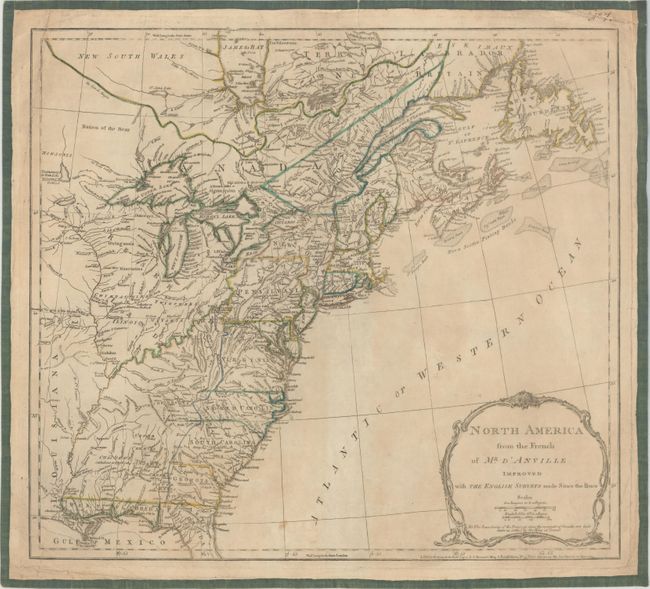Catalog Archive


Auction 175, Lot 93
"North America from the French of Mr. D'Anville Improved with the English Surveys Made Since the Peace", Jefferys/Sayer & Bennett

Subject: Colonial Eastern United States & Canada
Period: 1775 (dated)
Publication:
Color: Hand Color
Size:
20.1 x 18.1 inches
51.1 x 46 cm
Download High Resolution Image
(or just click on image to launch the Zoom viewer)
(or just click on image to launch the Zoom viewer)